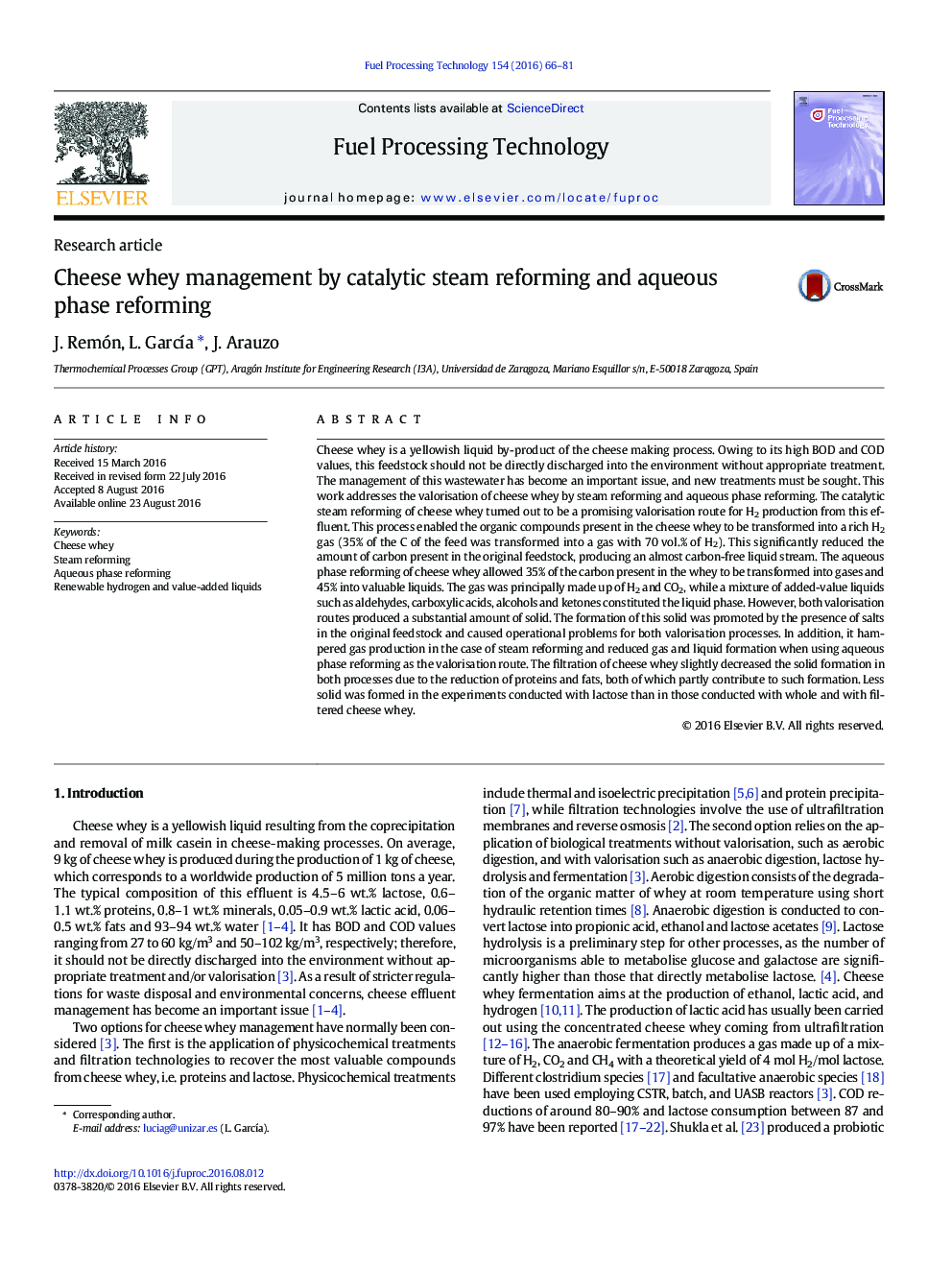| کد مقاله | کد نشریه | سال انتشار | مقاله انگلیسی | نسخه تمام متن |
|---|---|---|---|---|
| 4768989 | 1425392 | 2016 | 16 صفحه PDF | دانلود رایگان |
عنوان انگلیسی مقاله ISI
Cheese whey management by catalytic steam reforming and aqueous phase reforming
ترجمه فارسی عنوان
مدیریت پنیر با استفاده از اصلاح بخار کاتالیزوری و ریزش فاز آبی
دانلود مقاله + سفارش ترجمه
دانلود مقاله ISI انگلیسی
رایگان برای ایرانیان
کلمات کلیدی
پنیر پنیری، اصلاح بخار، اصلاح فاز آبی، هیدروژن مجدد و مایعات ارزش افزوده،
موضوعات مرتبط
مهندسی و علوم پایه
مهندسی شیمی
مهندسی شیمی (عمومی)
چکیده انگلیسی
Cheese whey is a yellowish liquid by-product of the cheese making process. Owing to its high BOD and COD values, this feedstock should not be directly discharged into the environment without appropriate treatment. The management of this wastewater has become an important issue, and new treatments must be sought. This work addresses the valorisation of cheese whey by steam reforming and aqueous phase reforming. The catalytic steam reforming of cheese whey turned out to be a promising valorisation route for H2 production from this effluent. This process enabled the organic compounds present in the cheese whey to be transformed into a rich H2 gas (35% of the C of the feed was transformed into a gas with 70Â vol.% of H2). This significantly reduced the amount of carbon present in the original feedstock, producing an almost carbon-free liquid stream. The aqueous phase reforming of cheese whey allowed 35% of the carbon present in the whey to be transformed into gases and 45% into valuable liquids. The gas was principally made up of H2 and CO2, while a mixture of added-value liquids such as aldehydes, carboxylic acids, alcohols and ketones constituted the liquid phase. However, both valorisation routes produced a substantial amount of solid. The formation of this solid was promoted by the presence of salts in the original feedstock and caused operational problems for both valorisation processes. In addition, it hampered gas production in the case of steam reforming and reduced gas and liquid formation when using aqueous phase reforming as the valorisation route. The filtration of cheese whey slightly decreased the solid formation in both processes due to the reduction of proteins and fats, both of which partly contribute to such formation. Less solid was formed in the experiments conducted with lactose than in those conducted with whole and with filtered cheese whey.
ناشر
Database: Elsevier - ScienceDirect (ساینس دایرکت)
Journal: Fuel Processing Technology - Volume 154, 15 December 2016, Pages 66-81
Journal: Fuel Processing Technology - Volume 154, 15 December 2016, Pages 66-81
نویسندگان
J. Remón, L. GarcÃa, J. Arauzo,
